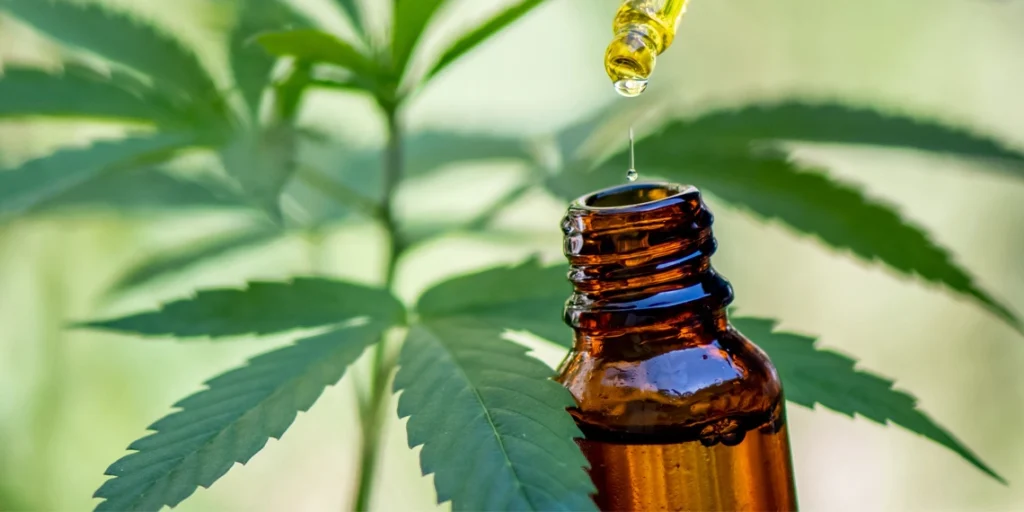According to a new report, the global market for cannabidiol (CBD) was valued at $7.6 billion in 2023 and is anticipated to reach approximately $36.6 billion by 2033.

CBD tincture.
Over the period from 2024 to 2033, the CBD market is projected to experience a compound annual growth rate (CAGR) of 17.5%.
“CBD is renowned for its efficacy in pain alleviation, seizure management, and anxiety treatment”, states the report. “This has fueled a burgeoning demand for CBD in health and wellness sectors, propelling the market forward. Government approvals further contribute to the growing acceptance and utilization of CBD-infused products, fostering increased manufacturing to meet the rising consumer demand.”
The prominence of Cannabidiol (CBD) “has surged as it emerges as a key player in health and wellness applications.”
The report notes that CBD’s “effectiveness in pain relief, seizure control, and anxiety treatment has driven a significant market demand. Government endorsements have played a pivotal role, fostering greater acceptance and utilization of CBD-infused products.”

Key takeaways from the report include:
- Product Types: CBD oil is the most dominant product type, with a market share of over 30%, largely due to its effectiveness in managing chronic pain.
- Source: Hemp represents the most lucrative segment, accounting for over 63.2% of the market, driven by the fact that hemp contains high levels of CBD and very low levels of THC (tetrahydrocannabinol), which is the psychoactive compound responsible for the “high” associated with marijuana.
- Sales Type: B2B holds the largest market share (55.1%) as the B2B transactions typically involve larger quantities of products or services compared to B2C. The segment is also expected to grow in the future as demand for CBD as a raw material is anticipated to increase.
- End-Use: Pharmaceuticals represent the most lucrative segment, accounting for over 37.2% of the market, driven by CBD’s neuroprotective and pain-relieving properties.
- Regional Dominance: North America leads the market, holding a 60% market share, with Europe and Asia-Pacific showing emerging demand.
In the global cannabidiol market, “North America takes the lead, boasting a substantial 72.1% market share during the forecast period.”
The region’s ascendancy “is attributed to the easing regulations on cannabidiol products in countries like the U.S. and Canada, fostering increased public acceptance. Notably, consumer preferences are evolving, prompting recognition of CBD’s benefits by manufacturers in the food, pharmaceutical, and cosmetic industries.”
However, “North America’s dominance may face challenges as Europe experiences a surge in sales for tobacco-free alternatives, including smoking, vaping, and edibles. This trend signals potential intense competition in the region.”
In the Asia Pacific region, which includes countries like China, Japan, and India, “there is a notable growth in the cannabidiol (CBD) market. The increasing demand for products infused with CBD and a noticeable rise in their legal status and acceptance present significant opportunities for businesses in the area.”
Market Drivers
The surging demand for personal care products is significantly influenced by the increasing popularity of goods containing cannabidiol (CBD). From pet supplies to cosmetics and health and beauty items, the shift in consumer perceptions toward cannabis-derived products is evident. The legalization of cannabis in many nations has propelled the demand for CBD-infused personal care items like tinctures, lotions, skincare products, capsules, vaping devices, and transdermal patches. The diverse applications, including potential therapeutic benefits and the calming effect on animals, contribute to their widespread appeal. Notably, significant investments in research and development by key players in the cannabis industry and various governments further fuel the growth of CBD-infused products, supported by studies confirming their efficacy in treating neurological conditions such as epilepsy.
Market Opportunities
The market is experiencing significant growth thanks to rapid advancements in manufacturing technology, fostering increased market value. This surge is attributed to the drive for cost reduction and waste minimization in production, coupled with a rising tide of industrialization. Notably, hemp materials are finding expanded applications, pointing to a promising future for the sector. As we look ahead to the period between 2024 and 2033, an array of factors such as heightened public-private funding for targeted research, growing disposable incomes, rapid urbanization, and evolving lifestyles due to technological strides are poised to offer lucrative opportunities for industry players. Moreover, the market is set to benefit from various factors contributing to its growth trajectory.
The rising global internet penetration rate, continuous strides in product development and commercialization, and favorable government policies, particularly in developing economies, are significant catalysts. Additionally, the escalating per capita expenditure and an overall positive environment surrounding cannabis-related products underscore the potential for sustained market growth in the foreseeable future.
More information from this report can be found by clicking here.




